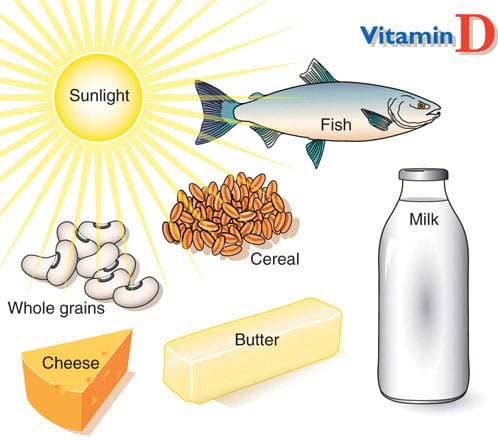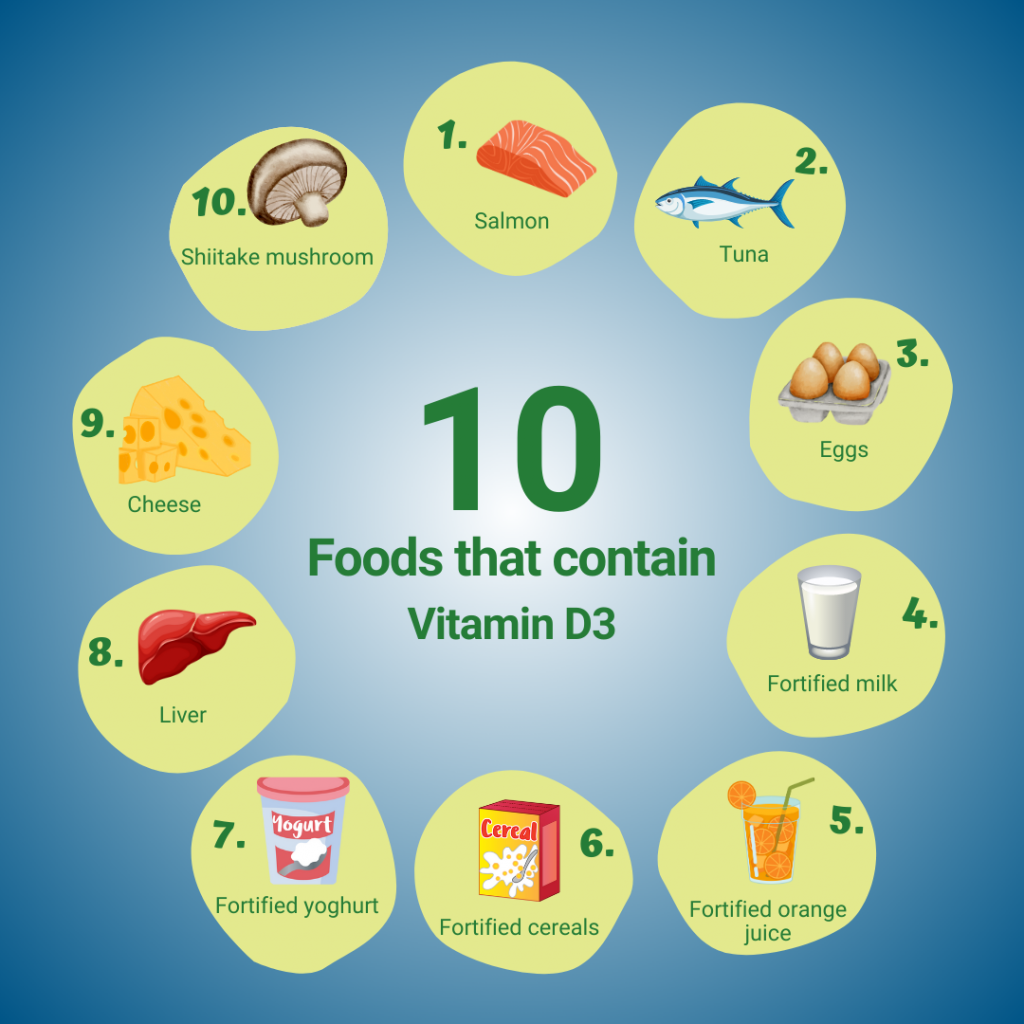Vitamin D, often hailed as the “sunshine vitamin,” plays a crucial role in maintaining overall health, influencing bone health, immune function, and various other physiological processes. While commonly referred to as a single entity, vitamin D encompasses two primary forms: vitamin D2 and vitamin D3.
Vitamin D2: A Plant-Based Powerhouse
Vitamin D2, also known as ergocalciferol, primarily originates from plant sources, including certain mushrooms, fortified foods, and some algae species. The human body converts ergocalciferol into its active form, calcitriol, through a multi-step process.

Vitamin D3: The Sun’s Bounty
In contrast, vitamin D3, also known as cholecalciferol, is predominantly synthesized by the skin upon exposure to ultraviolet B (UVB) radiation from sunlight. The body also obtains vitamin D3 from certain animal-based foods, such as fatty fish, egg yolks, and liver.

The Key Distinction
The primary distinction between vitamin D2 and vitamin D3 lies in their absorption and utilization by the body. Studies have shown that vitamin D3 is more effectively absorbed and converted into calcitriol compared to vitamin D2. This enhanced bioavailability attributes to vitamin D3’s reputation as the more potent form of vitamin D.
Factors Affecting Vitamin D Absorption
Several factors can influence the absorption of both vitamin D2 and vitamin D3, including:
Sun exposure: Adequate sunlight exposure is essential for vitamin D3 synthesis. However, excessive sun exposure can lead to sunburn and other skin health issues.
Skin pigmentation: Individuals with darker skin pigmentation tend to produce less vitamin D3 from sunlight exposure.
Age: As we age, the skin’s ability to synthesize vitamin D3 declines.
Dietary intake: Consuming vitamin D-rich foods can supplement vitamin D levels.
Certain medications: Certain medications can interfere with vitamin D absorption and metabolism.
Recommended Daily Intake (RDI)
The RDI for vitamin D varies depending on age and certain health conditions. Generally, the recommended daily intake for adults is 600 IU (international units), with higher recommendations for older adults and individuals with certain health conditions.
Vitamin D Deficiency and Its Consequences
Vitamin D deficiency is a prevalent global health concern, affecting billions of people worldwide. Symptoms of vitamin D deficiency can include bone pain, fatigue, muscle weakness, and impaired immune function. In severe cases, vitamin D deficiency can lead to rickets in children and osteomalacia in adults.
Supplementation: Bridging the Gap
For individuals who are unable to obtain sufficient vitamin D from sunlight or dietary sources, supplementation may be necessary. Vitamin D supplements are available in various forms, including capsules, tablets, and drops. Consult with a healthcare professional to determine the appropriate dosage for your individual needs.
Conclusion: Embracing the Sunshine and Nutritional Balance
Vitamin D, in its two primary forms, vitamin D2 and vitamin D3, plays a vital role in maintaining overall health. While vitamin D3 is more effectively absorbed and utilized by the body, both forms contribute to vitamin D status. Ensuring adequate vitamin D intake through a combination of sunlight exposure, dietary sources, and supplementation when necessary can help prevent vitamin D deficiency and promote optimal health.